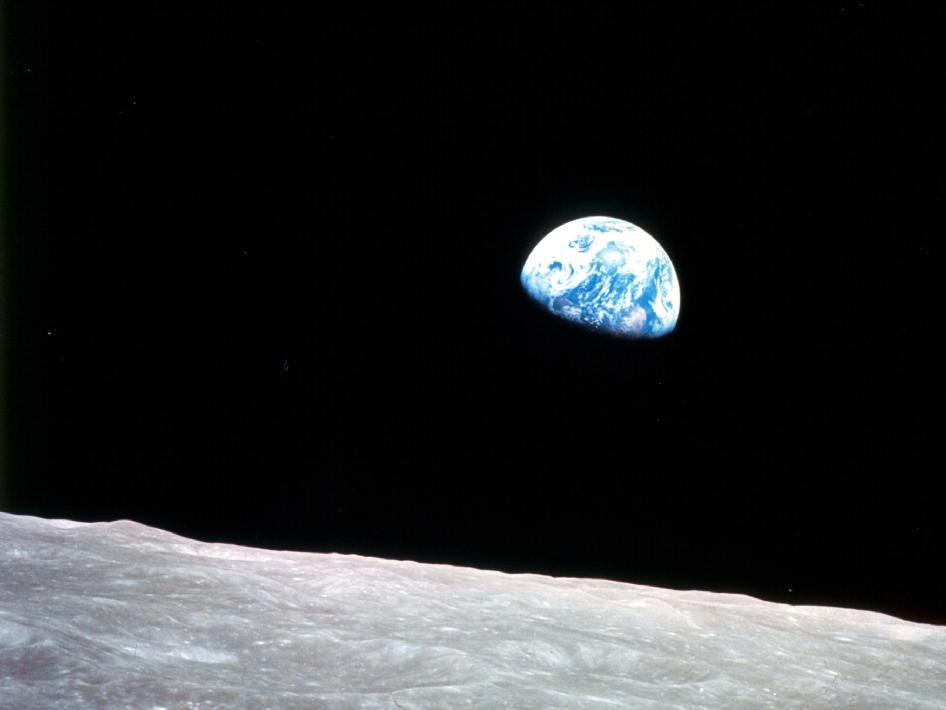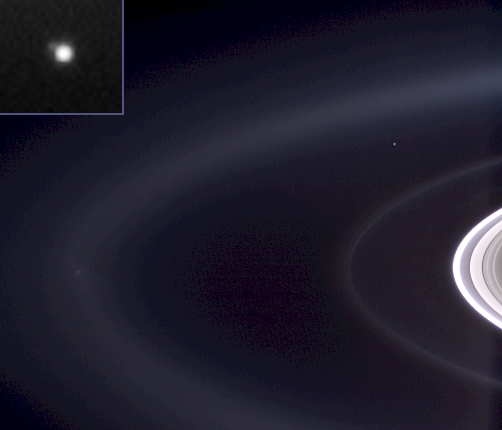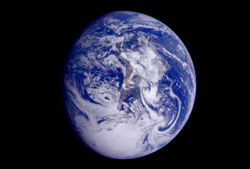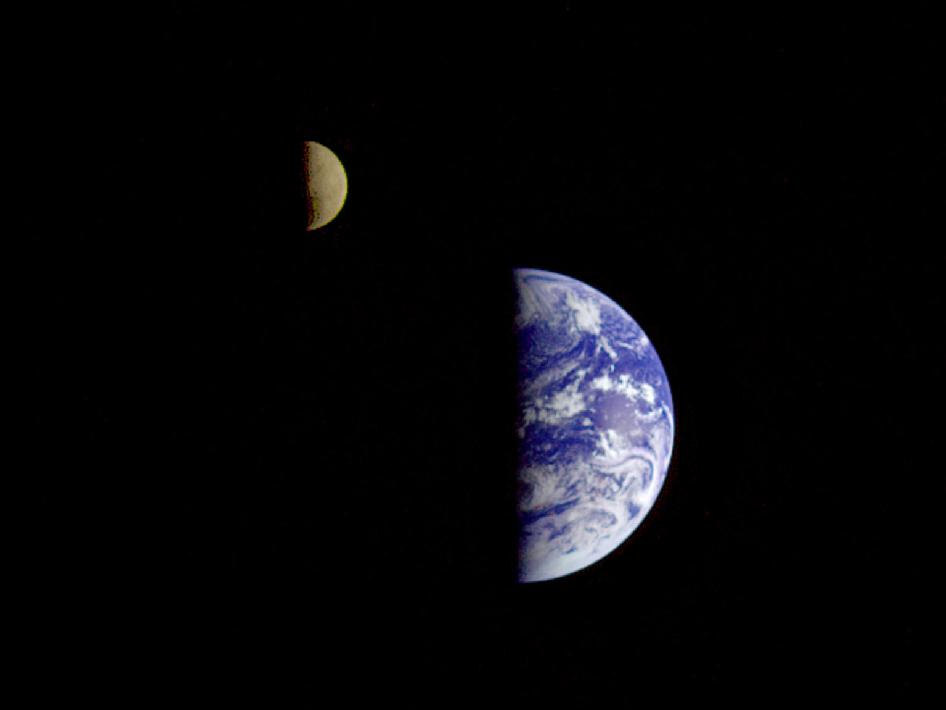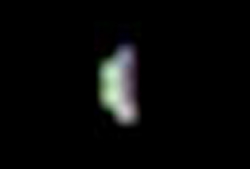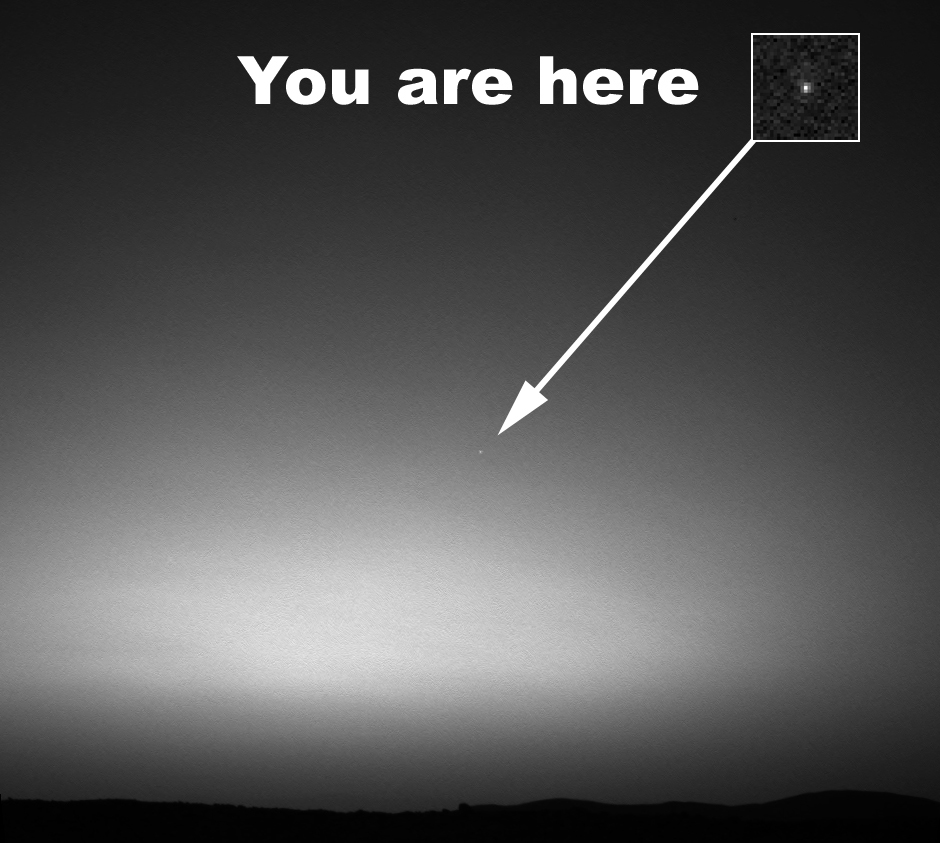Photos: Amazing Images of Earth from Space
Pale Blue Dot
This narrow-angle color image of the Earth s a part of the first ever "portrait" of the solar system taken by Voyager 1. The spacecraft acquired a total of 60 frames for a mosaic of the solar system from a distance of more than 4 billion miles from Earth and about 32 degrees above the ecliptic. Image released Feb. 14, 1990.
Earth Day at 40: Our Changing View of the Planet
The first photo of Earth from a weather satellite, taken by the TIROS-1 satellite on April 1, 1960. Early photographs provided new information on cloud systems, including spiral formations associated with large storms, immediately proving their value to meteorologists.
Earthrise from Apollo 8
Apollo 8, the first manned mission to the moon, entered lunar orbit on Christmas Eve, Dec. 24, 1968. That evening, the astronauts — Commander Frank Borman, Command Module Pilot Jim Lovell, and Lunar Module Pilot William Anders — held a live broadcast from lunar orbit, in which they showed pictures of the Earth and moon as seen from their spacecraft.
Earth Seen From Saturn
This image was taken by the Cassini spacecraft's wide-angle camera on Sept. 15, 2006, at a distance of 1.3 million miles from Saturn and about 930 million miles from Earth. The moon Enceladus is also captured on the left, swathed in blue and trailing its plume of water ice particles through Saturn's E ring.
Far From Home: Apollo 17
Astronaut Harrison Schmitt, Apollo 17 lunar module pilot, is photographed here next to the U.S. flag during NASA's final lunar landing mission in the Apollo series. The photo was taken at the Taurus-Littrow landing site while Schmitt was conducting extravehicular activity (EVA).
Galileo's Breathtaking Shots
This color image of the Earth was taken by the Galileo spacecraft on December 11, 1990, as it departed on its three year flight to Jupiter. Antarctica is visible at the bottom of the image, and dawn is rising over the Pacific Ocean.
Earth and Moon
This picture of the Earth and Moon in a single frame, the first of its kind ever taken by a spacecraft, was recorded Sept. 18, 1977, by NASA's Voyager 1 at a distance of 7.25 million miles from Earth. Because Earth is many times brighter than the Moon, the Moon was artificially brightened by a factor of three relative to the Earth by computer enhancement so that both bodies would show clearly in the prints.
Breaking space news, the latest updates on rocket launches, skywatching events and more!
On the Way to Mars
After traveling more than 727,000 miles in three days, the Mars Reconnaissance Orbiter's cameras were pointed toward Earth on Aug. 15, 2005. The Orbiter's main objective, to obtain daily global images of Martian meteorology, was postponed to help the Mars Color Imager science team obtain a measurement of the instrument's sensitivity and to check that no contamination occurred to the camera during launch.
Earth From Mars
This photo, called "Earth From Mars," was taken by NASA's Mars Exploration Rover Spirit on March 8, 2004. It was the first image of Earth seen from the surface of a planet beyond the moon.
MESSENGER's Solar System Family Portrait
The MESSENGER spacecraft, which is headed for orbit around Mercury, collected this series of images to complete a "family portrait" of our Solar System as seen from the inside looking out. The majority of this mosaic was obtained on 3 November 2010. Uranus and Neptune remained too faint to detect with even the longest camera exposure time, but their positions are indicated.

Space.com is the premier source of space exploration, innovation and astronomy news, chronicling (and celebrating) humanity's ongoing expansion across the final frontier. Originally founded in 1999, Space.com is, and always has been, the passion of writers and editors who are space fans and also trained journalists. Our current news team consists of Editor-in-Chief Tariq Malik; Editor Hanneke Weitering, Senior Space Writer Mike Wall; Senior Writer Meghan Bartels; Senior Writer Chelsea Gohd, Senior Writer Tereza Pultarova and Staff Writer Alexander Cox, focusing on e-commerce. Senior Producer Steve Spaleta oversees our space videos, with Diana Whitcroft as our Social Media Editor.


